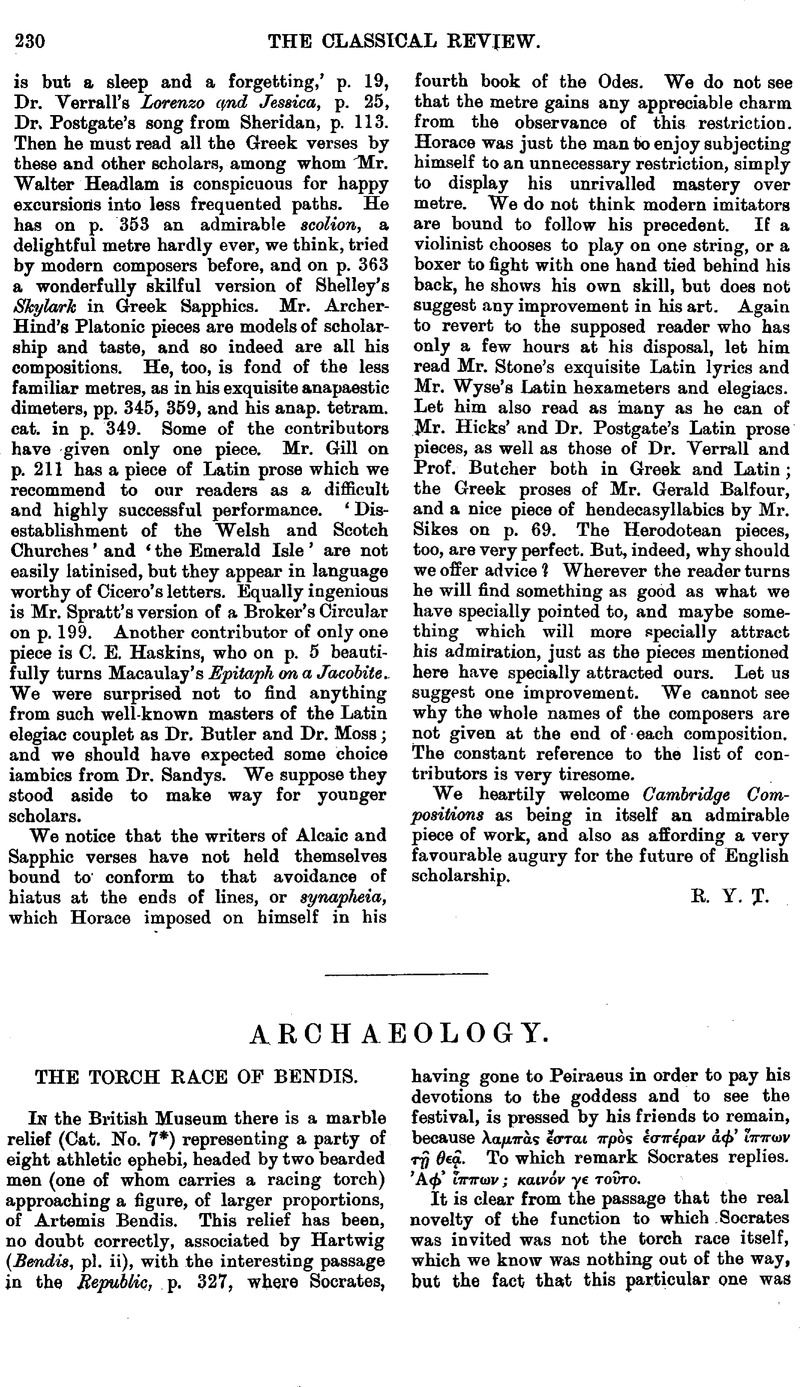No CrossRef data available.
Published online by Cambridge University Press: 27 October 2009

page 232 note 1 Wecklein, in Hermes, 1873, p. 437Google Scholar: and an excellent summary of the question in Frazer's Pausanias, ii. p. 392.
page 232 note 2 Plutarch, Aristides 20, quoted by Frazer.
page 232 note 3 On the relief the athletes are grouped, apparently by intention, in four pairs. Whether this is merely a device of the artist to vary the monotony of the group, or whether it means that the runners were actually associated in pairs, I will not venture to say. It is conceivable that two companions of the same party may have been provided for each stage of a long roadrace, to provide against breakdown or other accident. In that case of course each pair would run twelve miles. It seems to me clear that the object in the hand of the first athlete is not a torch, as Hartwig thinks, but more likely a wreath: and that none of the others have held a torch. Only one torch would have been used, and that is held by the bearded man at the head, probably the γυμνασίαρχος.
page 233 note 1 Upon this base has just been replaced the large marble pedestal with inscription to Fl. Julius Constantinus (C.I.L. vi. 1158) which previously stood by it; it is recorded to have been found ‘ad arcum Constantini,’ where it is shown in Duperac's Vatigi di Roma, Plate 3, and its measures are directly proportional to those of the brick base.
page 233 note 2 Under the pavement of this road in 1803 was found C.I.L. vi. 1161 (date A.D. 356–359); see Nibby, Roma Antica, i. 485; Jordan, Topographie, i. 2, 307, note 137. After the excavations of 1827–35 (see Thedenat, Le Forum Remain, p. 53) the pavement was restored, for under it have been found coins of 1811 and 1826.
page 234 note 1 Mon. Inst. 1836, tav. 33, 34.